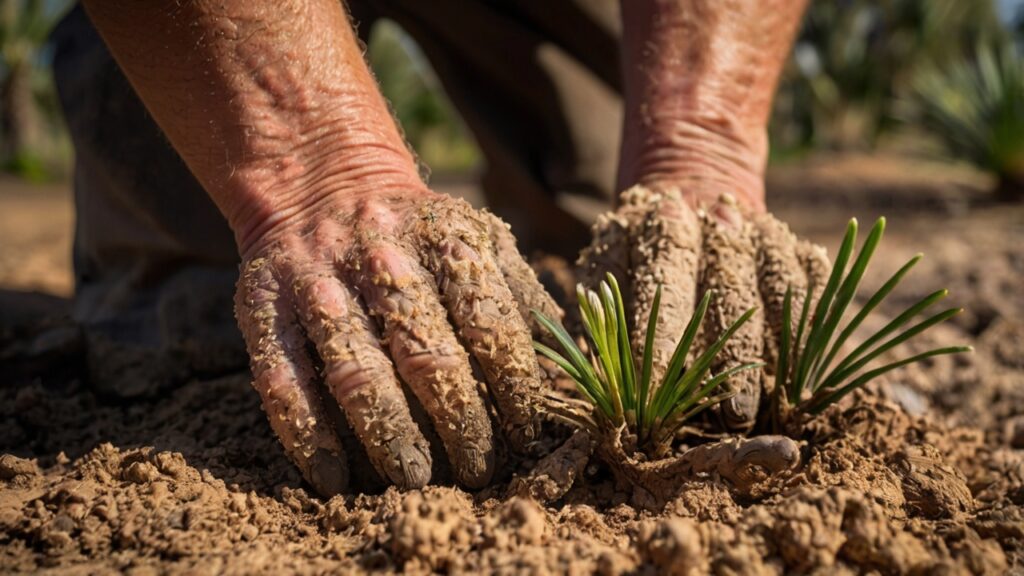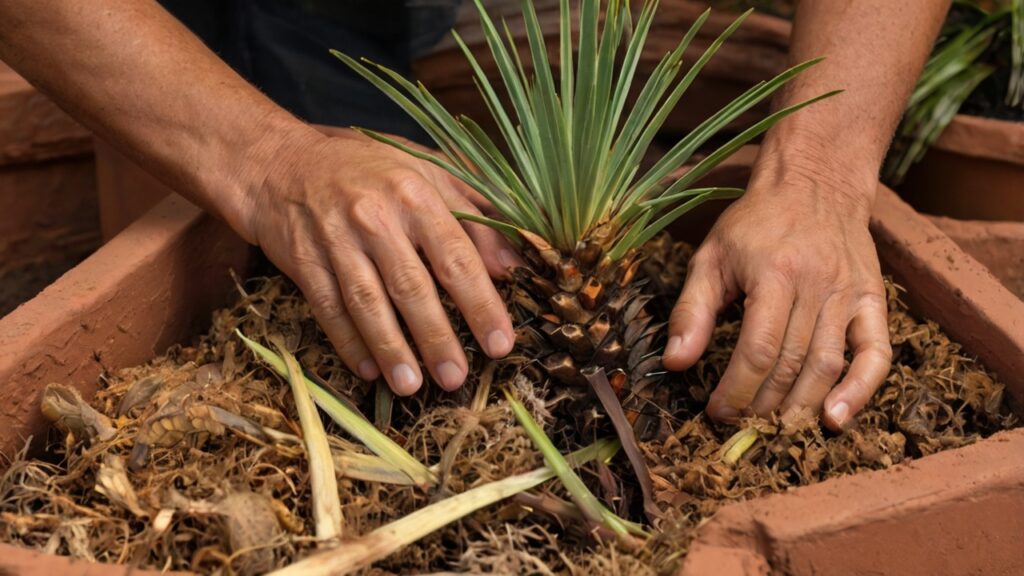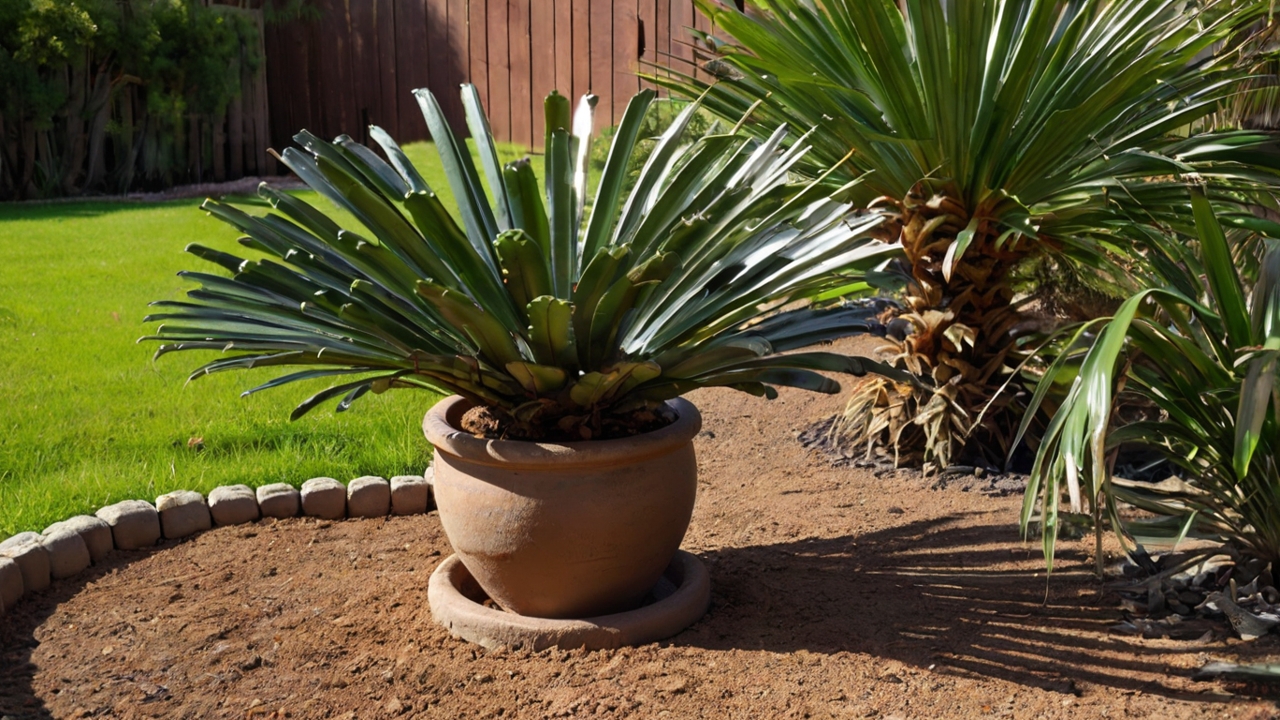Why Sago Palms Are a Must-Have for Plant Lovers
Sago palms (Cycas revoluta) are ancient cycads that bring dramatic, prehistoric beauty to gardens and homes. Despite their name, they aren’t true palms but distant relatives of conifers. Here’s why they’re worth growing:
✅ Drought-tolerant – Thrive in dry conditions once established
✅ Slow-growing – Only produce 1–2 new fronds per year (great for small spaces)
✅ Long-lived – Can survive 50–100+ years with proper care
✅ Versatile – Grow indoors or outdoors in warm climates
⚠️ Highly toxic – Dangerous for pets (more on safety later
Step-by-Step Sago Palm Care Guide
1. Light Requirements: Sun vs. Shade
Sagos need bright, indirect light but can adapt to different conditions:
🌤️ Outdoors:
- Ideal: Morning sun + afternoon shade (especially in hot climates)
- Tolerates: Full sun (if acclimated) but may scorch in extreme heat
🏡 Indoors:
- Place near a south or east-facing window
- Rotate monthly to ensure even growth
- Avoid dark corners—sagos stretch and weaken in low light
2. Soil: The Foundation for Healthy Growth
These plants hate soggy roots and need fast-draining soil:
Best Mixes:
- Outdoors: 50% sandy soil + 30% perlite/pumice + 20% compost
- Potted Plants: Cactus/succulent mix with extra grit
🚫 Avoid: Heavy clay or moisture-retentive potting soils
3. Watering: The #1 Killer of Sago Palms
Overwatering leads to root rot, while underwatering causes dry, crispy leaves.
💧 Watering Schedule:
- Spring/Summer: Water every 7–10 days (let soil dry completely between waterings)
- Fall/Winter: Water every 3–4 weeks (reduce frequency in cold months)
Signs of Trouble:
- Yellow leaves = Too much water
- Brown, crispy tips = Underwatered or low humidity

Advanced Care: Fertilizing, Pruning & Winter Protection
4. Fertilizing for Lush, Green Fronds
Sagos need micronutrients (especially magnesium & manganese) to prevent yellowing:
🌱 Best Fertilizers:
- Palm-specific formulas (e.g., 8-2-12 with micronutrients)
- Epsom salt (1 tbsp per gallon of water monthly)
⏰ When to Fertilize:
- Spring to early fall (skip winter!)
- Apply every 8–10 weeks
5. Pruning & Maintenance
✂️ Do:
- Remove only dead or yellowing fronds at the base
- Wear gloves (leaf tips are sharp!)
🚫 Don’t:
- Cut green fronds—they feed the plant
- Prune the central crown (can kill the plant)
6. Winter Care (For Cold Climates)
🌡️ Temperature Tolerance:
- Survives brief dips to 15°F (-9°C) but needs protection
- Potted Sagos: Bring indoors before frost
Winter Tips:
- Mulch the base with straw or leaves
- Cover with frost cloth during freezes
Toxicity Warning: Keeping Pets Safe
🚨 All parts of sago palms are poisonous, especially the seeds. Even small amounts can cause:
- In dogs/cats: Vomiting, liver failure, seizures (requires emergency vet care)
- In humans: Severe stomach pain if ingested
Safety Measures:
- Keep sagos out of reach of pets/children
- Consider pet-safe alternatives (e.g., ponytail palm, parlor palm)
Troubleshooting Common Problems
| Issue | Cause | Solution |
|---|---|---|
| Yellow lower leaves | Overwatering / Poor drainage | Repot in gritty mix |
| Brown leaf tips | Low humidity / Salt buildup | Flush soil, mist leaves |
| No new growth | Nutrient deficiency | Fertilize with palm food |
| Scale insects | Pest infestation | Wipe with alcohol/neem oil |
Propagating Sago Pups: Easy Step-by-Step
Expand your collection by removing offsets (“pups”) from the mother plant:
- Sterilize a knife and cut a pup with roots attached.
- Let it dry for 2 days to callous.
- Plant in a small pot with sandy soil.
- Water lightly until established (~6 months).

Final Tips for Success
- Patience is key – Sagos grow very slowly (1–2 inches/year).
- Drainage is critical – Use pots with holes and elevate outdoor plantings.
- Observe regularly – Catch pests/overwatering early.
Frequently Asked Questions (FAQs)
1. How fast do sago palms grow?
Sago palms are extremely slow-growing, typically producing only 1–2 new fronds per year. A mature plant (3+ feet tall) can take decades to reach full size.
2. Are sago palms toxic to dogs and cats?
Yes! All parts of the plant (especially the seeds) contain cycasin, a deadly toxin. Even small amounts can cause liver failure in pets. Seek vet care immediately if ingested.
3. Why are my sago palm leaves turning yellow?
Yellow fronds usually indicate:
- Overwatering (most common)
- Poor drainage
- Magnesium deficiency (try Epsom salt)
4. Can sago palms grow indoors?
Yes, but they need:
- Bright, indirect light (south or east-facing window)
- Low humidity (avoid bathrooms)
- Infrequent watering (every 3–4 weeks in winter)
5. How often should I water a sago palm?
- Outdoors: Every 7–10 days in summer, every 3–4 weeks in winter.
- Indoors: Let soil dry completely between waterings.

Leave a Reply